In the past months, the phrase “quiet quitting” has become popular among businesses and workers, and not in a good way. Although the term has been around for some while now, quiet quitting peaked following the pandemic when employees demanded more welfare-improving measures like workplace flexibility. Employees also persisted in requesting that their needs be given priority by company leaders as the world recovered from the pandemic.
Quiet quitting is when an employee does nothing more than the basics required of them by their position. According to Gallup, “Quiet quitters” make up at least 50% of the U.S. workforce. The reasons why employees choose this path can be numerous. There might be too much or too little workload, toxic culture, loss of interest, or a mismatch of skills/title. Another reason for lack of motivation might be that the employer is unable to meet needs and make them feel appreciated. It’s also possible that the employees aren’t being sufficiently challenged by their position. The good news is all these scenarios that can be addressed with coaching.
Quiet Quitting is a threat and an opportunity to check in
Although noticing quiet quitters in your company is not the end of the world, it has the potential to be a threat if not addressed immediately. You can think of it as a symptom indicating there is something wrong going on in your organization. So, it presents an opportunity for managers and leaders to check in with their workforce and reawaken engagement through the open dialogue that coaching fosters. Asking them about their true motivations and aims will also help you to determine where to focus your HR development efforts.
An expert, such as a professional coach, assists people in determining their career goals and creating a strategy to achieve them. Launching a coaching program is another indication of a company’s commitment to employee engagement and development. This dedication to employee development may raise morale and trust among staff members, increase loyalty, and decrease turnover.
Coaching sessions can also help employees deal more effectively with challenges at work. Maybe they’re having trouble completing a particular project at work or handling a difficult situation with a co-worker. A coach can offer ongoing support and encouragement to help them think through the challenge in new ways.
Coaching Can Help Talent and Organizations Develop Strategically
Managers are frequently highly technical and preoccupied with achieving business goals. They might lack the time or skill set to get to know each employee individually (except if they are coach-like leaders, which is the subject of our next article, so stay tuned). On the other hand, coaches work with employees to help them understand themselves and develop their potential while considering each person’s skill level. By receiving coaching, a person can make a realistic definition of one’s current state, career goals, and the steps one needs to take to reach those goals. And the good news is you can incorporate the organization’s strategic development areas within these objectives. Once these objectives and steps are established, the coaching process empowers the person to take timely action.
Additionally, coaching elevates development beyond memorization and comprehension. The individual’s skill set will become more solidified through application in various situations.
With distinctive one-on-one feedback and lots of encouragement, coaching engages participants. An individual can contribute more effectively to the group and the organization when they become engaged at work. Their careers, as well as the overall organization, benefit from this engagement’s ability to boost productivity and retention rates.
Empowering your people with coaching
The presence of a coach provides a secure setting for the individual to discuss delicate issues. It’s typical for employees to experience insecurity and self-criticism, especially after making mistakes. Coaches can assist in recognizing and reframing negative thoughts and beliefs when the person is discouraged. Examining and getting rid of limiting beliefs will make the person more confident and productive in their role.
The coachee can gain perspective without feeling intimidated by a member of their own organization when the coach is a third-party. An external coach can remain detached while providing guidance and hence creates a safe space for candid conversations.
Identifying reasons behind loss of engagement
If the scenario above is the case, it might also mean that the individual might be having problems with their direct managers. It is known that engagement is directly affected by the level of communication with the direct manager. A study shows that 77 percent of people with bad managers hope to leave their company soon, whereas only 18 percent of people with great managers plan to leave soon. Coaching is a powerful tool when it comes to identifying blind spots or bottlenecks in your organization that might hinder engagement and acting on them.
Coaching fosters honest communication
Coaching, on the flip side of the coin, can also make a person realize that the role is no longer a match. They might have outgrown the job, which can lead to a feeling that their work there is done, and it’s time to move on. Or it wasn’t a match in the first place. This doesn’t necessarily mean that the person should leave the company altogether. Digitalization and the new ways of doing business already bring upskilling and reskilling requirements. So, maybe there’s another position that is a better match for that person. Coaching creates a safe environment that nourishes honest communication and exploration.
Let’s face it, honesty is key to relationships, and business is no exception. Coaching encourages honesty to oneself and the organization the person works for. So, no matter the result, it saves valuable time and resources for the company AND the individual.
Coaching can enlighten blind spots
A coach can pave the way for their coachee to develop personally, but more importantly, they can assist in making the coachee aware of their own blind spots. These are aspects of the person’s work or personality that they might not see but that need to be improved. Once the person is aware of these weaknesses, they can start working with the coach to strengthen them. A person can transform their hidden weaknesses into marketable strengths by developing personal awareness. For participants in talent development programs, this self-awareness is a crucial confidence booster and can be useful in future roles.
Coaching for independent thought and decision-making
Although open communication is the ideal among team members, most organizations still suffer from the more dominant communication style of upper management, and that may intimidate employees. And they’ll undoubtedly start their new jobs with less self-assurance than their managers and coworkers with more experience. As a result, they might lack the self-assurance necessary for independent thought and decision-making. Employees who receive coaching can develop their own distinctive communication styles and learn how to effectively express their ideas, especially in multicultural settings.
There might be countless reasons behind quiet quitting, but it’s clear that coaching can be an ally to the company and the individual, no matter what the scenario is. Building a strong culture empowered by coaching will create a safe and nourishing environment that no one would like to quit, quietly or otherwise.



